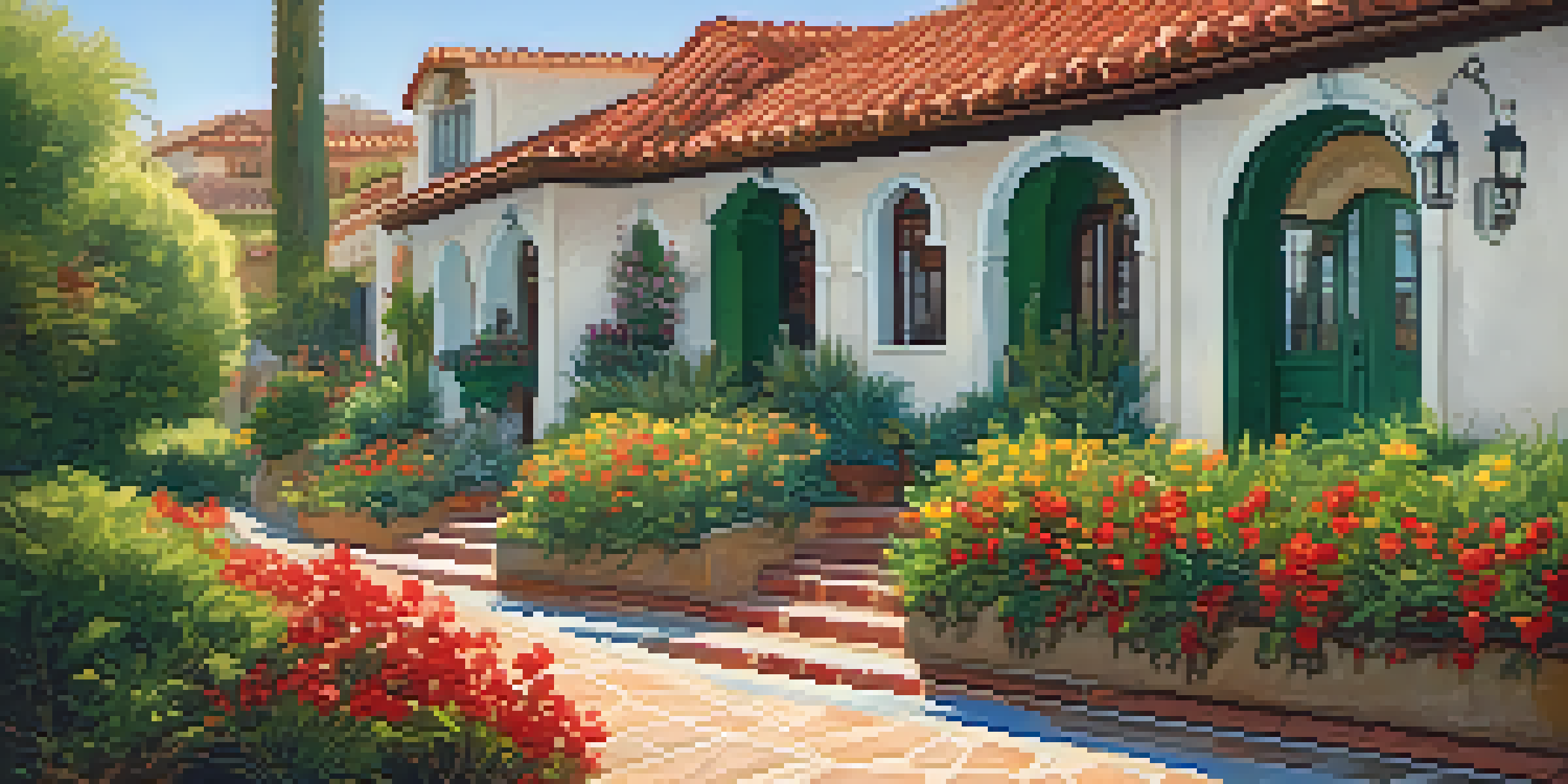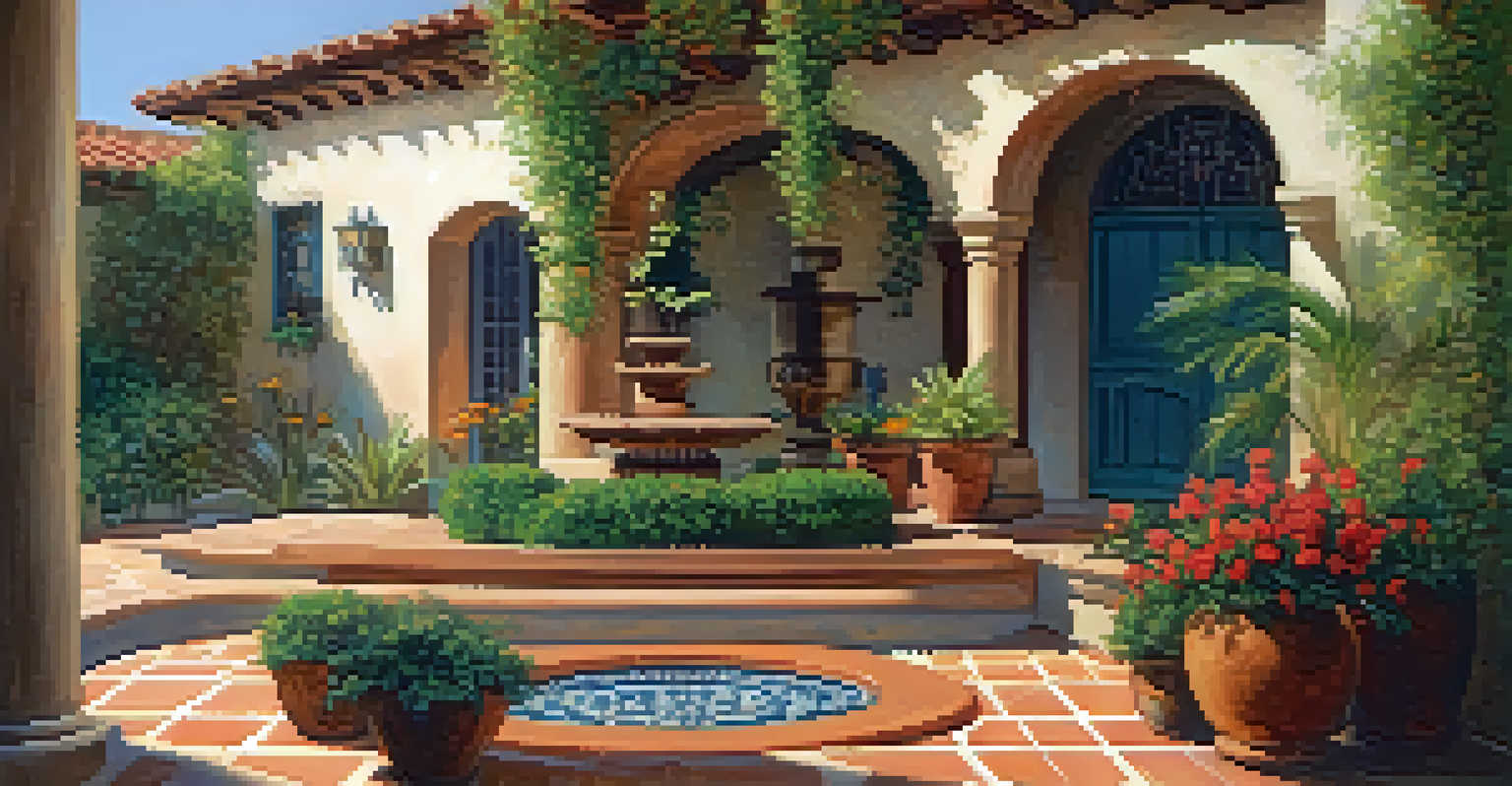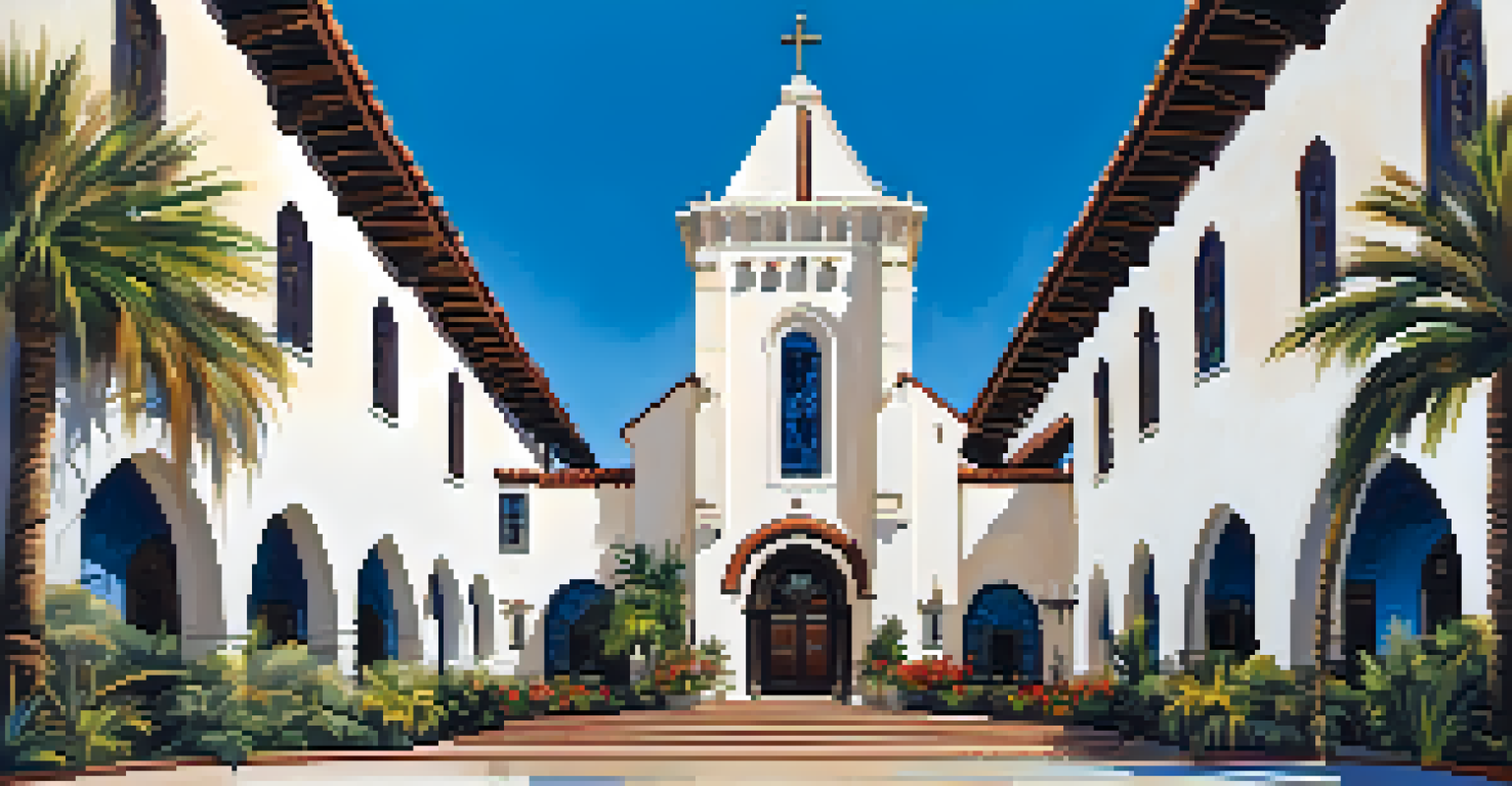Spanish Revival Architecture: A Gem of Carlsbad's History

What is Spanish Revival Architecture?
Spanish Revival architecture is a style that draws inspiration from the colonial buildings of Spain and Latin America. Characterized by stucco exteriors, red-tiled roofs, and ornate details, it often evokes a sense of warmth and nostalgia. This architectural style emerged in the early 20th century, blending various elements such as Moorish, Mediterranean, and even Mission styles. Its popularity can be attributed to the romantic allure of Spanish culture and the desire for a unique, picturesque aesthetic.
Architecture should speak of its time and place, but yearn for timelessness.
In the United States, Spanish Revival architecture became particularly popular in areas with Mediterranean climates, like California. It seamlessly integrates with the natural landscape, making it a fitting choice for coastal cities. The style's emphasis on outdoor spaces, such as courtyards and gardens, enhances the relaxed, inviting atmosphere that many homeowners desire. This architectural choice resonates with those who appreciate both beauty and functionality in their living spaces.
Carlsbad, with its sunny weather and coastal charm, is a prime example of where Spanish Revival architecture flourished. The buildings here reflect not just a style, but a way of life that celebrates community and connection. As you stroll through the streets, the vibrant colors and intricate details beckon you to appreciate the artistry behind each structure.
The Historical Context of Carlsbad's Architecture
To truly appreciate the Spanish Revival architecture in Carlsbad, it's essential to understand the historical context. The early 1900s marked a period of growth and development in California, driven by tourism and the allure of the California lifestyle. Influences from various cultures began to shape the architectural landscape, with Spanish Revival emerging as a prominent style. This was a time when cities were designing themselves to attract visitors, and Carlsbad was no exception.

The establishment of the California Mission Trail and the growing interest in the Spanish heritage significantly contributed to this architectural trend. Many builders and architects sought to replicate the charm of Spanish colonial buildings, incorporating local materials and craftsmanship. As a result, Carlsbad's streets began to take on a unique character that reflected both historical reverence and modern aspirations.
Spanish Revival: A Cultural Treasure
Spanish Revival architecture reflects the romantic allure of Spanish culture through its stucco exteriors and red-tiled roofs.
In Carlsbad, notable structures like the historic Hotel Carlsbad showcase the elegance of this style. These buildings have become landmarks that tell the story of a community embracing its roots while looking toward the future. They serve as a reminder of the rich cultural tapestry that defines this coastal town.
Key Features of Spanish Revival Architecture
Spanish Revival architecture is known for its distinctive features that create a cohesive and inviting aesthetic. One of the most recognizable elements is the use of stucco, which provides a rustic yet elegant finish that can withstand the coastal elements. Red-tiled roofs, often with a low pitch, further enhance the Mediterranean vibe and are a hallmark of this style. These elements combine to create a sense of harmony that draws the eye and invites exploration.
Every building is a product of its time and place, and must reflect that culture in a way that is meaningful and appropriate.
Additionally, ornate details such as wrought iron balconies, arched windows, and decorative tiles add character and charm. These features often reflect the craftsmanship of the era and showcase the artistic influences that shaped the style. Courtyards and outdoor living spaces are also integral to Spanish Revival homes, promoting a lifestyle that embraces the outdoors and fosters community interaction.
In Carlsbad, you can see how these key features come together to create visually stunning homes and public buildings. Each structure tells a story through its design, encouraging residents and visitors alike to appreciate the beauty around them. The inviting atmosphere of these buildings is not only about aesthetics; it reflects the warmth and hospitality of the community.
Iconic Spanish Revival Buildings in Carlsbad
Carlsbad is home to several iconic Spanish Revival buildings that capture the essence of this architectural style. One prime example is the Carlsbad Village Art District, where you can find colorful buildings adorned with intricate tile work and charming courtyards. These spaces not only serve as artistic hubs but also showcase the community's commitment to preserving its architectural heritage. Walking through this area feels like stepping back in time, with every corner revealing a piece of history.
Another notable structure is the historic St. Patrick's Catholic Church, which features stunning Spanish Revival architecture. Its bell tower and beautifully crafted details stand out against the skyline, making it a beloved landmark for locals. The church serves as a gathering place for the community, reinforcing the connection between architecture and social cohesion.
Carlsbad's Architectural Heritage
Carlsbad showcases iconic Spanish Revival buildings that highlight the town's rich history and commitment to preserving its cultural identity.
These iconic buildings are more than just beautiful structures; they are symbols of Carlsbad's identity and its rich cultural history. Each one invites you to explore the stories and traditions that have shaped the community over the years, making them vital parts of the town's landscape.
The Influence of Spanish Revival on Modern Design
The influence of Spanish Revival architecture extends beyond its historical roots and continues to inspire modern design today. Many contemporary builders and architects are incorporating elements of this style into new developments, blending classic features with modern functionality. This fusion creates homes that not only pay homage to the past but also cater to the evolving needs of today’s lifestyle, making it a popular choice among homeowners.
For instance, modern Spanish Revival homes might include open floor plans, energy-efficient materials, and sleek finishes while still featuring traditional stucco exteriors and terracotta roofs. This approach allows for a seamless integration of old-world charm with contemporary conveniences, appealing to a wide range of buyers. As a result, the style remains relevant and desirable in a fast-changing architectural landscape.
In Carlsbad, you can see this trend in new developments that embrace the Spanish Revival aesthetic while incorporating modern amenities. This evolution of the style ensures that it remains a vital part of the community's architectural identity, celebrating its heritage while looking towards the future.
Preserving Carlsbad's Architectural Heritage
Preserving Carlsbad's architectural heritage is essential to maintaining the unique character of the community. Local preservation efforts focus on safeguarding the Spanish Revival buildings that define the city's historical landscape. Organizations and community members work together to promote awareness of the importance of these structures, advocating for their protection and restoration when necessary.
Restoration projects often aim to maintain the integrity of the original design while updating the buildings to meet modern standards. This careful balance ensures that the historical significance of the structures is honored, while also making them functional for contemporary use. Community involvement plays a crucial role in these efforts, as residents recognize the value of preserving their shared history.
Modern Influence of Spanish Revival
Today's architects blend Spanish Revival elements with modern design to create homes that honor tradition while meeting contemporary needs.
As you explore Carlsbad, you'll likely encounter signs of these preservation initiatives, from restored homes to community events celebrating local architecture. These efforts not only enrich the cultural fabric of the community but also inspire a sense of pride among residents who cherish their town's unique heritage.
Visiting Carlsbad: A Journey Through Spanish Revival
Visiting Carlsbad offers a delightful opportunity to experience Spanish Revival architecture firsthand. As you wander through the charming streets, you'll be greeted by beautifully designed buildings that tell the story of the town's rich history. Take your time to appreciate the intricate details, from the decorative tiles to the elegant arches that define this architectural style. Each building has its own unique character, inviting exploration and discovery.
Consider joining a guided walking tour to gain deeper insights into the history and significance of these structures. Local historians often share fascinating anecdotes about the buildings and their architectural features, enhancing your understanding of the cultural context. These tours provide a wonderful way to connect with the community and appreciate the artistic legacy that Spanish Revival architecture represents.

Whether you're a history buff, an architecture enthusiast, or simply looking for a picturesque place to explore, Carlsbad has something to offer. The blend of stunning architecture, vibrant culture, and welcoming community makes it a destination worth visiting, where the past meets the present in beautiful harmony.